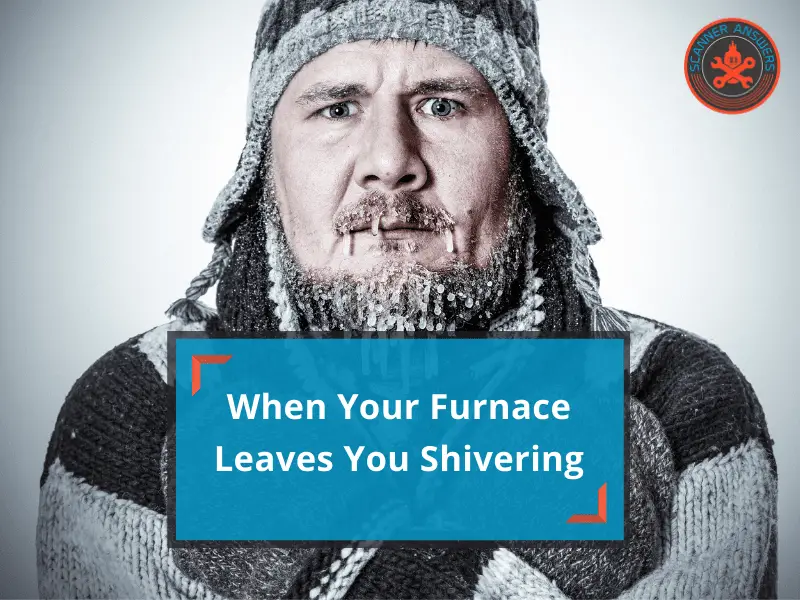
While most people think of the summer as the peak season for camping, winter outings can be a hidden gem. While tent camping in the colder months might be limited to the brave or foolish, having an RV allows you to extend your camping adventures year-round. Although the decrease in mosquitos and humidity is a welcome change, winter camping still carries its fair share of challenges.
Compared to a traditional home, campers are generally not exceptionally well insulated. Thus, keeping them warm can be difficult even when everything is working properly. There are multiple systems that various RVs use to heat their interiors, but the traditional propane furnace is the most common. There are countless advantages to these tried-and-true units. They’re inexpensive, efficient, and generally quite reliable. Of course, no machine is immune to issues.
Having an RV furnace that won’t ignite is a frustrating experience.
If the thermometer drops low enough, it can even be an issue of safety. Whether you’re full-time or simply out for a chilly escape, it is important to know how to quickly have your furnace back in business. Thankfully, the troubleshooting process is quite simple and can be done by anyone. All you need is some patience and a checklist- like ours below!
[su_panel background=”#ffff” shadow=”2px 2px 2px #eeeeee” radius=”4″]8 Things to Check When Your RV Furnace Doesn’t Ignite
Although this list is not necessarily in order, it isn’t a bad idea to work your way through it one item at a time. As you gain more experience repairing your RV systems, you will develop shortcuts to getting to the heart of the matter more efficiently.
[/su_panel]
1. Thermostat
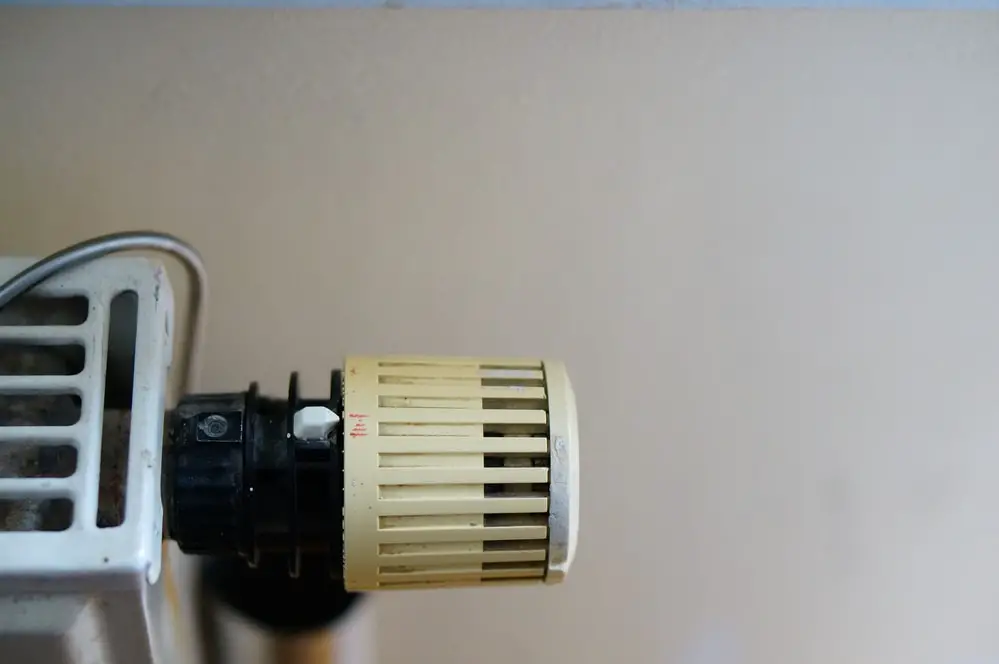
The thermostat is what controls when and how your furnace turns on, so it is a great place to start if you are having issues.
Is it On?
The first step may seem obvious, but it has flummoxed me more times than I care to admit. Is the thermostat on? It’s easy to accidentally knock your thermostat out of “heat” mode, which will naturally put an end to your furnace’s heat. Further, many thermostats have two modes, labeled “heat” and “emergency heat.” Typically, the heat mode is designed to trigger the propane furnace, and the emergency setting is designed to trigger an electric back-up. Your RV may not be equipped with the second option, so the emergency setting could actually do nothing at all.
Is it Set to the Right Temperature?
Thermostats may have a lot of buttons and lights, but they are ultimately very simple devices. While this simplicity makes them reliable, it also makes them less accurate. Your thermostat may not know the actual temperature inside your camper, so it might not be heating to the set amount. Beyond this, the thermostat is only measuring the temperature in one specific place. Is your thermostat in an area that may be warmer than the rest of your RV? That could explain why you’re starting to shiver even though the thermostat is set to a balmy seventy-five.
Dean over on Youtube has a great guide to troubleshooting RV thermostats (this is on a 2019 Jayco
How to Test Your Thermostat:
If you’ve checked the settings of your thermostat and still haven’t heard your furnace kick on, there are a few methods to test it. First, slide your temperature setting to full-heat. Sometimes the electrical contacts will have corrosion or another electrical issue that makes the heat only turn on in certain settings.
Next, if you feel comfortable doing so, you can jump the wires to bypass the thermostat and force the furnace to turn on.
To do this, remove the cover of your thermostat to expose the wiring. There may be a screw or two holding the cover on, but typically it simply snaps off. You will see about five wires, and two should be labeled “G” and “W or R.” Typically, these wires will be white and red, respectively, but there is often a helpful wiring diagram identifying the heat and ground circuits. Using a paperclip or a small piece of wire, make a connection between these. If you hear the furnace turn on, you likely have a bad thermostat.
Read more about RV thermostat wiring.
2. Propane

When it comes to diagnosing a flaky furnace, Occam’s razor normally applies: the simple solutions are often the most likely. Your furnace likely runs on propane, distributed from one or two tanks somewhere near the front of your RV. Unlike your car, there isn’t a gas gauge on these fuel tanks, so it is easy for their levels to slip your mind. If you can hear your furnace running but no heat is being blown, it is very possible that you are simply out of propane.
How to Check Your Levels:
To check the level of your tanks, feel the outside of the tank and see if there is a specific level where the tank is significantly colder. Because of the pressure of the propane, it lowers the temperature of the tank, so you can tell how full it is. If you can’t tell based on feel, simply pick up the tank and see how much it weighs. An empty tank is typically lighter than it looks, so if you have no struggle hoisting your propane tanks, they are probably empty.
Is There a Backup?
Finally, if your RV has two propane tanks, see how they are plumbed. Some higher-end RVs have automatic tank switching wherein you don’t need to manually change anything to switch from the empty tank to the full. However, if your RV is not equipped with such a system, you may need to open a different valve or even swap over the hose. If you are unsure of how to do this, see if someone around your campground is willing to help. Campers are generally very helpful people, and you’re sure to find someone who can get the gas flowing again.
[/su_panel]
3. Blown Fuses
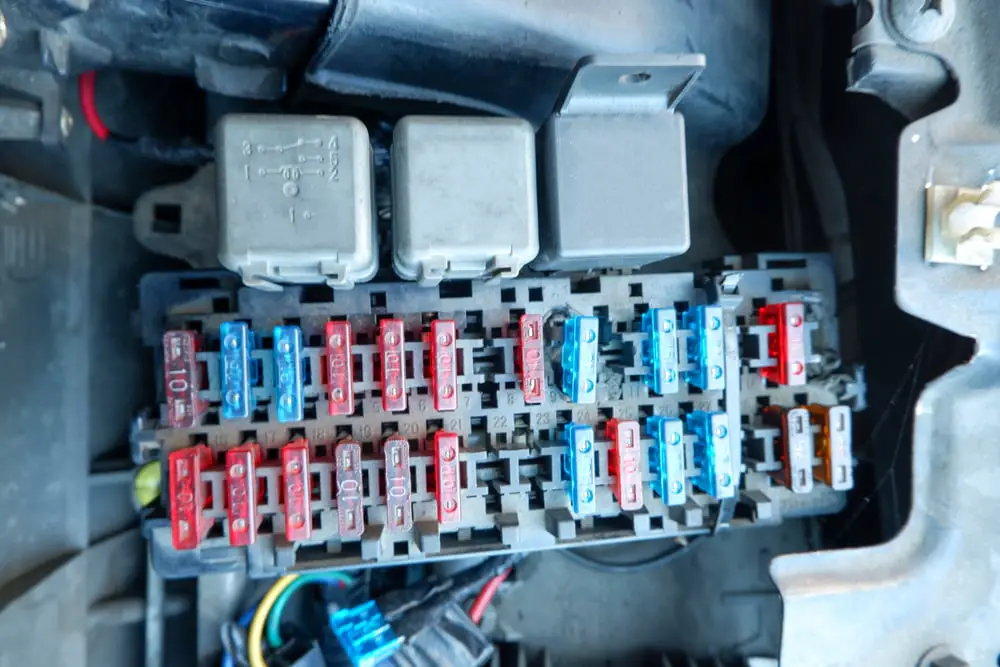
If your propane tanks are full but you’re still not getting any action from your furnace, the issue may be as simple as a blown fuse. Although fuses are designed to protect us, they can also be a source of significant frustration. When a fuse blows, it cuts electricity from the device that is being powered, and it can make it seem like there is a more significant problem than there really is.
Start With the Source
Unfortunately, RVs can be fairly complex electrically, and there won’t necessarily be a manual or wiring diagram to rely on. In most situations, your camper will have four fuses to consider. First, there is often a large “master” fuse or circuit breaker that connects the battery of your RV to all of the 12-volt electrical equipment. If this is blown, none of the 12-volt devices will work, not just the furnace. To test this, try running some 12-volt lights or a vent fan. If those work, the main fuse isn’t the problem.
Go to the Main Panel
Second, your camper will have a distribution panel similar to a car. This is probably the most likely fuse to fail within the circuit. Open this panel and see any fuses labeled “heat” or “furnace.” Visually inspect the fuse to see if it is burned or if the contact is broken. A good fuse should look like a “U”, while a blown fuse will have a gap like “l l”. If you see a broken fuse, replace it and see if your furnace now lights. However, if the fuse immediately blows again, resist the urge to simply put a large capacity fuse in. This may work in a pinch, but it can be a dangerous solution leading to damage or even fire.
Lastly, there are often fuses on the furnace itself and the thermostat. The location varies, but they are typically easy to find.
4. Battery Power
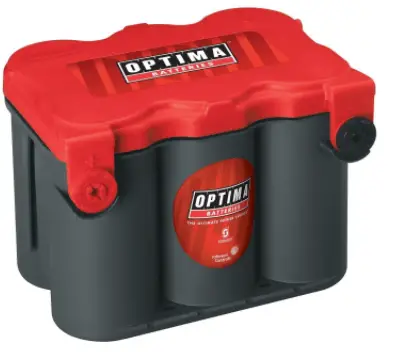
If all of the fuses check out and you know you have fuel in your tanks, the next step is to verify that you have sufficient battery power to run your furnace. The electronics and blower motor of your thermostat and furnace are generally powered by the 12-volt DC system in your RV. This is normally an advantage because it allows your furnace to provide heat while boondocking, but it can also lead to problems when your batteries run low.
Check Your Voltage
If you have a volt-meter or another way to check the voltage of your batteries, see how many volts they are maintaining. A furnace generally needs at least 12.5 volts to run, so if your batteries are much below that level, your furnace may fail to heat. If you find that your voltage is low, there are a few likely causes. First, you could simply have run your battery down for too long. When is the last time you charged it? How many items have you been running? Even though the heat in a furnace is produced by propane, the fan and associated mechanisms can require a surprising amount of electricity to work. If you aren’t sure why your battery is low, it may indicate an issue with your onboard charger. This issue will more than likely require a qualified repair person.
If possible, charge your batteries using either a shore-power charger, your tow vehicle, or solar. Once the batteries are charged, try again.
[/su_panel]
5. Power Switch
The old adage “have you tried turning it off and on again?” is a trope for a reason: it often works. Because they are normally hidden away in a cabinet or closet, many RV owners might not realize that their furnace has a master power switch located directly on the furnace. The specific location will vary based upon the model, but these switches are normally a large red button located on the front of the furnace unit. If you’re having trouble finding it, check outside your RV behind the vent cover. Sometimes it is hiding there.
Has the Heat Been on This Season?
It is common for RV shops to turn this switch off when servicing or winterizing an RV, so if you haven’t used your furnace yet this season and you are having issues, this is a good place to start. It is even possible that something shifted in the cabinet and knocked the switch to the “off” position. If this switch is off, you could easily be tricked into thinking you have a bad furnace even if nothing is actually wrong.
A Reset is Never a Bad Idea
Even if the switch is not off, toggle it to off, wait a moment, and then switch it back on. Many modern furnaces have electronics inside that can occasionally malfunction. Just like your phone or laptop, sometimes a simple reset is all that is needed to jolt your furnace back to life.
6. Air Filter
The air filter is a surprisingly overlooked aspect of the heating system in an RV. A dirty air filter can create a myriad of issues and mask other symptoms. If your furnace is turning on but not heating efficiently, a clogged air filter is the primary suspect. In some cases, the filters are reusable. If so, simply clean the filter, let it dry, and reinstall. In other situations, you may need to replace the filter altogether. Thankfully, they are generally very inexpensive. In either case, allowing a free-flowing source of air can help give your furnace the boost it needs.
A Clogged Filter Can Cause a Blown Fuse
If a filter is extremely clogged, it can wreak more havoc than simply reducing airflow. If the blower motor is having to work particularly hard to move air through a dirty filter, it can overheat the motor and blow a fuse. If your furnace will run for a few minutes but then turns off without reason, this may be the culprit. In addition, many furnaces have oxygen sensors that detect how much air is available to burn. If the sensor doesn’t see enough air, it will tell the burner to shut off. Regardless of the symptoms, cleaning your filters is never a bad idea.
[/su_panel]
7. Gas Line
One of the most alarming causes of furnace issues is a faulty gas line. Propane is not only extremely flammable, but it is exceedingly toxic. A leaking gas line is nothing to take chances with. If you hear a hissing noise or suspect for whatever reason that you have a failed gas line in your RV, shut the propane tanks and leave the RV immediately. Repairs to the propane plumbing should only be done by qualified and licensed technicians. Unfortunately, this isn’t an area where a DIY solution will suffice.
However, if you are simply wondering if your furnace issues are caused by a supply issue, feel free to check the valves. There are often three valves between your propane tank and the furnace. One on the tank itself, one on the regulator near the tank, and one near the furnace input. If any of these are inadvertently closed, then gas will not flow to the furnace and you won’t have heat. Full counter-clockwise is “open” on almost all of these valves.
8. Furnace
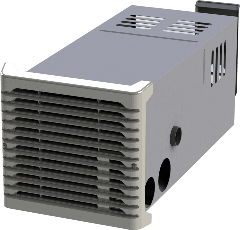
If you’ve completed these tests and you are still left without heat, you may have to face the unfortunate reality that the furnace itself may be faulty. As previously mentioned, propane RV furnaces are generally very reliable, but they are still susceptible to failed burners, jets, valves, and blower motors. Beyond this, we are increasingly seeing a high rate of failure in the control electronics themselves. Generally, furnace repair requires specialized knowledge and equipment, so it is not a great task for the home mechanic. On the bright side, they are generally simple devices that are reasonably cheap to repair. If you suspect a faulty furnace, any local RV shop should be able to help.
[/su_panel]
[su_panel background=”#ffff” shadow=”2px 2px 2px #eeeeee” radius=”4″]
RV Furnace Troubleshooting Tips
Beyond the broad advice given above, here are a few helpful tips that can help you diagnose a faulty furnace, or prevent an issue altogether.
[su_icon_text icon=”icon: check ” icon_color=”#00a9e0″ icon_size=”33″]Test Your Furnace Before You Need it[/su_icon_text]
RVs are complicated. They combine the mechanical components of a car and a house and then subject everything to violent roads and conditions. In short, failures are not uncommon. The best method is to always test your furnace before you need it. A freezing night in the middle of nowhere is a terrible time to realize you don’t have heat.
[su_icon_text icon=”icon: search-plus” icon_color=”#00a9e0″ icon_size=”33″]Research Your Specific Model[/su_icon_text]
The internet is an amazing thing, isn’t it? One key advantage to RV furnaces is that there aren’t that many different models. The vast majority of RV’s will have one of only a handful of furnace models, typically from either Dometic or Suburban (by Airxcel). Check the model number of your furnace and search for that specific brand. More than likely, someone out there has had the same issue you’re having and has already done the leg work for you.
[su_icon_text icon=”icon: assistive-listening-systems” icon_color=”#00a9e0″ icon_size=”33″]Learn to Listen[/su_icon_text]
One of your most powerful tools in diagnosing an RV furnace is sound. What if your blower comes on but won’t ignite? Well, generally that will be a gas issue. What if you hear the flames ignite but there is no heat? That is often a broken or stuck blower fan. Listening for the symptoms can be a valuable method of knowing what is wrong, and can help you describe the symptoms to a repair person if need be.
[su_icon_text icon=”icon: fire” icon_color=”#00a9e0″ icon_size=”33″]How do I Manually Light My RV Furnace?[/su_icon_text]
Most RV furnaces have a manually lit pilot light. This is a small flame that is always burning in the furnace that allows the main burner to instantly ignite when the main gas valve is turned on. If you are not getting heat from your furnace or if you are using your RV for the first time in the season, you may need to manually relight your pilot.
The specific procedure will vary depending on the model, but there is normally a valve on the furnace labeled “pilot.” Turn the valve to this setting and get a long lighter (like you’d use for a candle). Using a flashlight, see where the gas line terminates into a nozzle. This is the pilot light. Light the lighter and verify that the pilot light is lit. If you are unsure, research the lighting procedure for your specific model.
[su_icon_text icon=”icon: bolt” icon_color=”#00a9e0″ icon_size=”33″]Consider Carrying Back-Up Sources of Heat[/su_icon_text]
No products found.
Struggling with a faulty furnace when the temperature is dropping is a stressful and frustrating experience. Being able to just “deal with it in the morning” is a wonderful gift on a frigid night. To accommodate this, I always carry at least two backup sources of heat in my RV during the winter. First, bring a simple electric space heater. These are not only cheap to buy, but they can save you money in the long run. When you book a campsite, the electricity is included. Thus, you may as well use electricity to heat your camper rather than expensive propane.
Second, bring a small propane heater in case you don’t have electricity. No products found. is a common brand, but there are many reputable makers. These small heaters generally run off the one-pound green bottles of propane, and they can put out a surprising amount of heat. Simply make sure to have a window cracked for both venting and moisture reduction. And always have a working smoke and carbon monoxide alarm in your camper!
[/su_panel]
[su_panel background=”#ffff” shadow=”2px 2px 2px #eeeeee” radius=”4″]
Conclusion
Whether you have an ultra lightweight toy hauler, or a bunkhouse travel trailer, when your RV furnace won’t ignite in the winter time, you can be scrambling for heat.
Thankfully, the mechanisms within these venerable heaters are fairly simple, and learning the basics of troubleshooting is a simple process. With a few methodical steps, you will more than likely have heat in no time. In either case, be prepared, plan ahead, and work through the options. And most importantly, enjoy your time camping.
[/su_panel]